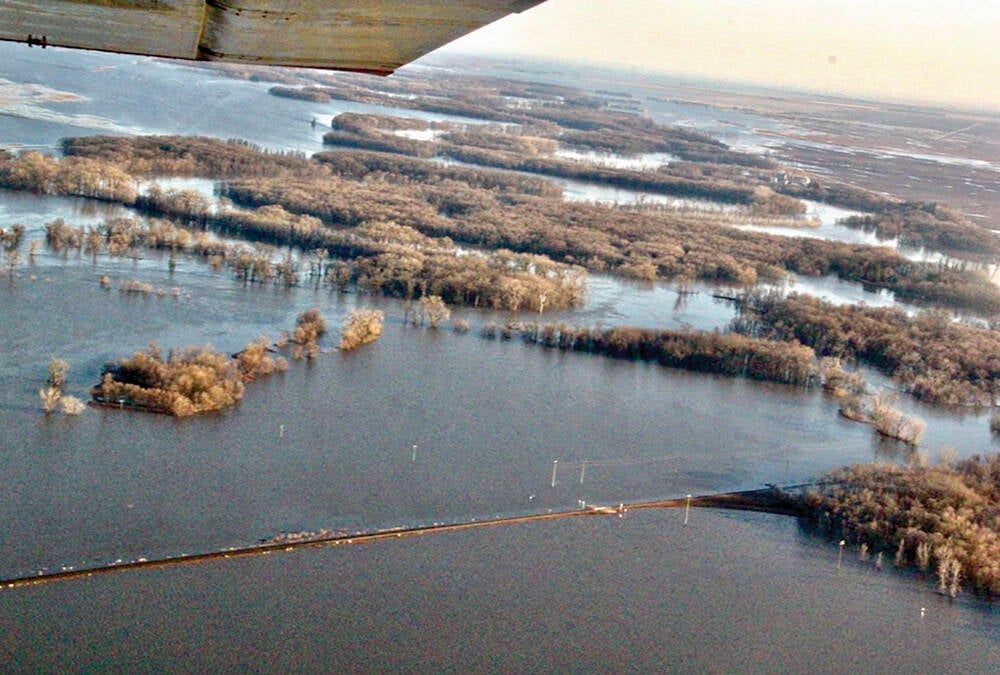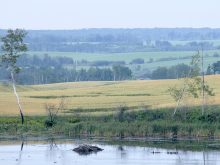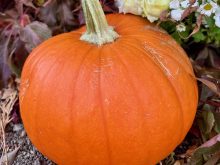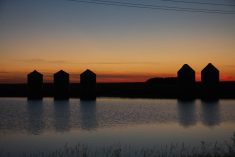Lintlaw, Sask. – Reiden Hodgetts remembers she and her groom David feeding and watering their sheep on July 10.
They had just been married on their east-central Saskatchewan farm and the wedding photographer saw it as a great photo opportunity.
While the newlyweds, complete with traditional white dress and black tuxedo filled feeding troughs with barley, the camera clicked away.
“Feeding the sheep was a detail we forgot to organize,” said Reiden.
As the Hodgetts walk across the yard to their corral of young lambs and ewes for afternoon chores this day, Reiden affectionately calls them “the brats.” Their wedding photographs include one of them with a lamb.
Read Also

Rural Manitoba resources slim on natural disaster planning
A study from Brandon University’s Rural Development Institute has found that many rural and small municipalities don’t have the staff or resources to make formal climate plans against natural disaster.
Raising sheep is a good fit for the Hodgetts’ lifestyle and long-term goals.
“We both want to stay at home. We’ll probably have kids soon and we’ll both be at home and have the kids raised on the farm. And have enough sheep to make that justifiable, of course,” said David.
Surrounded by their family from Alberta and new and old friends, the young couple was married at their farm north of Lintlaw, Sask.
Alberta land prices and availability were out of reach for the young newlyweds who both had agricultural backgrounds.
“We were on 14 acres in Alberta with 280 head of sheep in a dry lot system. We wanted more land and maybe produce some of our own feed. We looked around Alberta for a long time before we ended moving out here 21/2 years ago,” said David.
Off the farm, David has worked as a heavy-duty mechanic in the oilfields and spent several months of the year working in Fort McMurray.
For the first year, Reiden was at home managing the farm operation, sheep herding and daily chores by herself.
“It was all right … They’re handling friendly. I could easily go outside and easily handle the sheep myself and not worry about getting run over and laying dead in a snow bank. Even just bringing them into a barn. If a sheep kicks you, it might hurt but you won’t be trampled.”
David said sheep are low maintenance and low cost.
“The nice thing about sheep if you’re wanting to get into sheep, your input costs can be really low. You don’t need big tall fences like you do with cows or a handling system, which is nice that way,” he said.
The herd includes about 350 ewes, downsized from 450 last year to make it more manageable. They also have six horses, 12 cows, six dogs, five cats and three goats.
“If we keep (all the sheep), we’re going to cull really hard this year. It’s way easier to manage a young herd than it is an older herd. But when we got into sheep we kept a lot of the older ones to build up the herd to get to the size it is now. Now we have to get rid of them in order to grow again,” he said.
“Seems like after you get over that 250 mark, it becomes a lot of work. It’s pretty manageable at 250,” David said.
“We’ve got them all for sale now. We’d like to get rid of all of them and get high health, closed flock, high productive sheep because if you’re going to be here doing the work all the time, you might as well make that little bit of extra money off of them,” he said.
The Hodgetts concede their learning curve has been steep, but they credit fellow sheep producers and training courses with helping them.
In July, they attended the Grasslands Sheep Exhibition in Drake, Sask., where they learned about topics like nutrition.
“You’re always learning more with sheep. We had sheep when we were young but sheep have changed. Back then you just stuck them out on the field and you got one lamb and that was good, but now you have to get your productivity up there still to make the same money because feed costs are much higher now and diesel and everything else.
“If you don’t get your productivity up, it’s harder to make the same amount of money to make it pay,” said David.
“The problem with sheep is you have to learn fast.”















